Plants bring life, color, and a touch of calm to any indoor space. Whether you’re a seasoned plant lover or just starting your indoor garden journey, knowing how to care for plants properly is essential to keep them healthy and thriving. From getting their water and sunlight needs just right to ensuring they stay dust-free and well-fed, even small changes in your routine can make a big difference. In this guide, we’ll walk through six essential care tips that will help your indoor plants flourish year-round—without stress or second-guessing.
Table of Contents
Table of Contents
Provide the Right Water and Sunlight
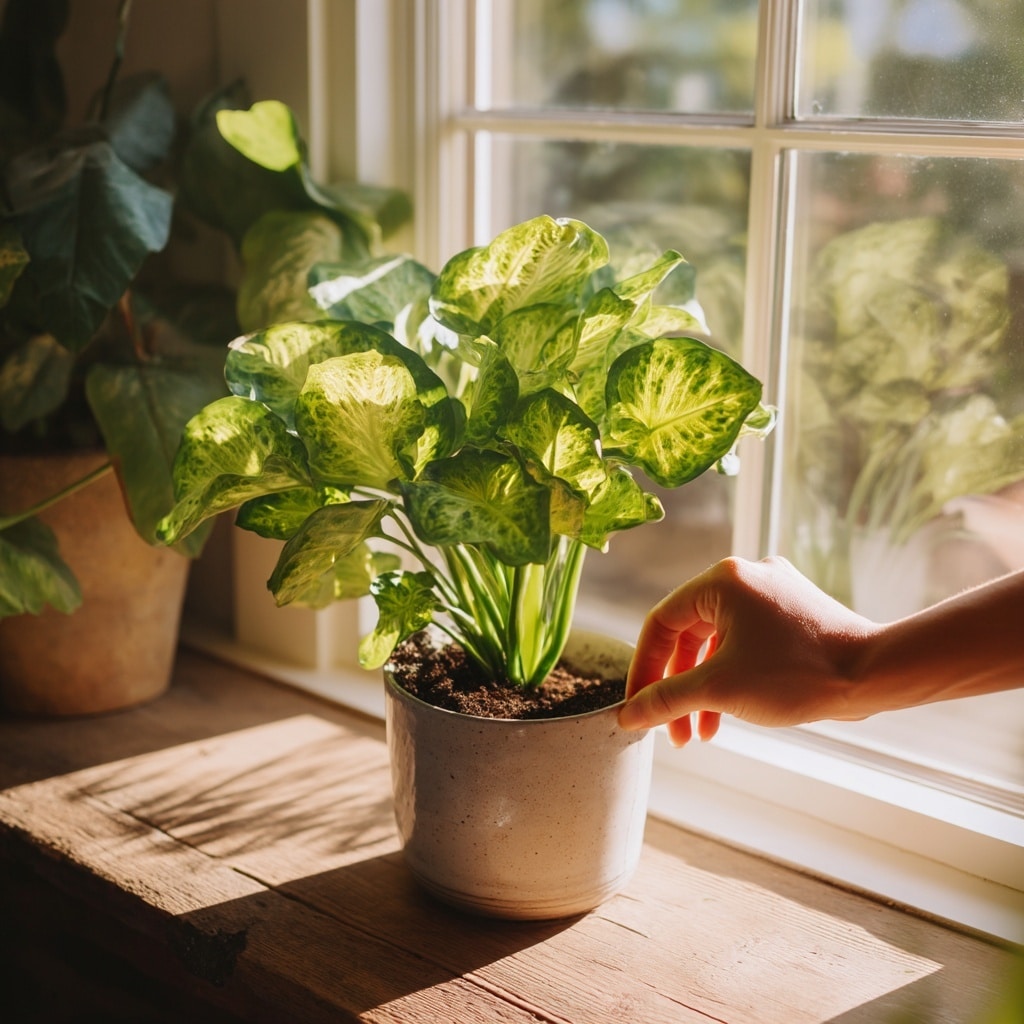
Caring for your plants starts with understanding their basic needs—water and sunlight. These two elements are essential for healthy growth, yet they’re also the most common areas where plant parents go wrong. Overwatering or placing a plant in the wrong spot can quickly lead to drooping leaves, root rot, or stunted growth. Fortunately, with a few simple adjustments, you can give your indoor plants the environment they need to thrive.
Check Soil Moisture the Right Way
Instead of watering on a fixed schedule, check the soil manually. Stick your finger about two inches deep into the soil—if it feels dry at that depth, it’s time to water. This technique helps avoid the common mistake of overwatering, which can lead to root rot in many indoor plants. Keep in mind that some plants, like succulents and cacti, prefer drier soil, while others like ferns enjoy more consistent moisture.
Understand Each Plant’s Light Preference
Sunlight is just as crucial as water. The direction your windows face makes a big difference. South-facing windows provide the most sunlight, which is ideal for sun-loving varieties like Fiddle Leaf Figs and Rubber Trees. For low-light plants such as Snake Plants, ZZ Plants, or Pothos, north-facing or shaded spots are more suitable. Medium-light plants like Peace Lilies do well in east-facing windows with gentle morning sun.
By tailoring the placement and watering habits to each plant’s specific needs, you’ll create the best conditions for healthy, happy houseplants.
Don’t Keep Moving Your Plants
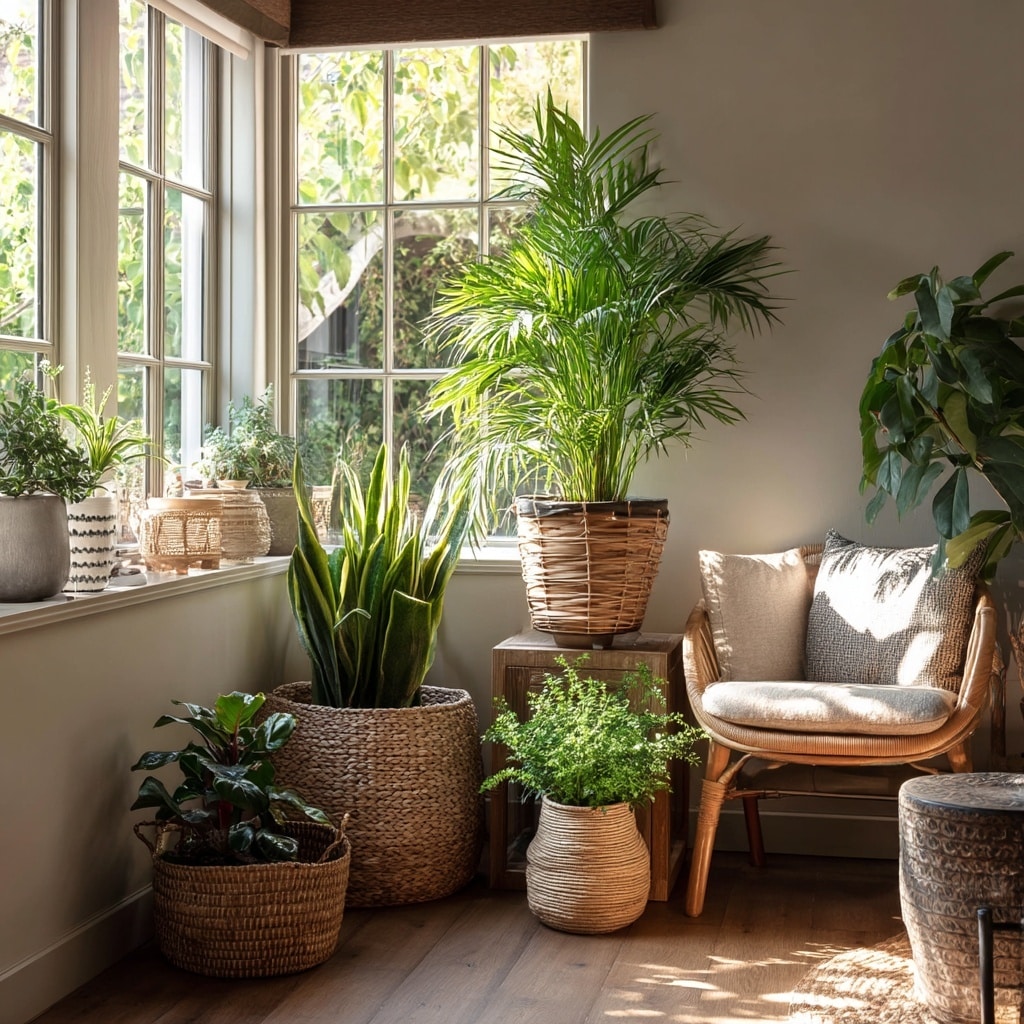
It may seem harmless to rearrange your indoor decor and shift your plants around for aesthetic reasons, but frequent moving can actually stress them out. Just like people, plants adapt to their surroundings. Once they’ve adjusted to a certain level of light, humidity, and temperature, any major change can interrupt their growth and overall health.
Why Stability Matters
When you move a plant too often, it has to readjust its orientation toward the light source. This shift can cause drooping leaves, halted growth, or even leaf drop in more sensitive species. Roots may also get disturbed during frequent repositioning, which can lead to stress or damage. It’s best to observe where your plants thrive—then leave them there.
Of course, there are exceptions. If a plant isn’t doing well in its current location (yellowing leaves, leggy growth, etc.), a one-time move to better lighting or airflow conditions may help. But once it’s happy, consistency is key.
Boost Humidity Indoors
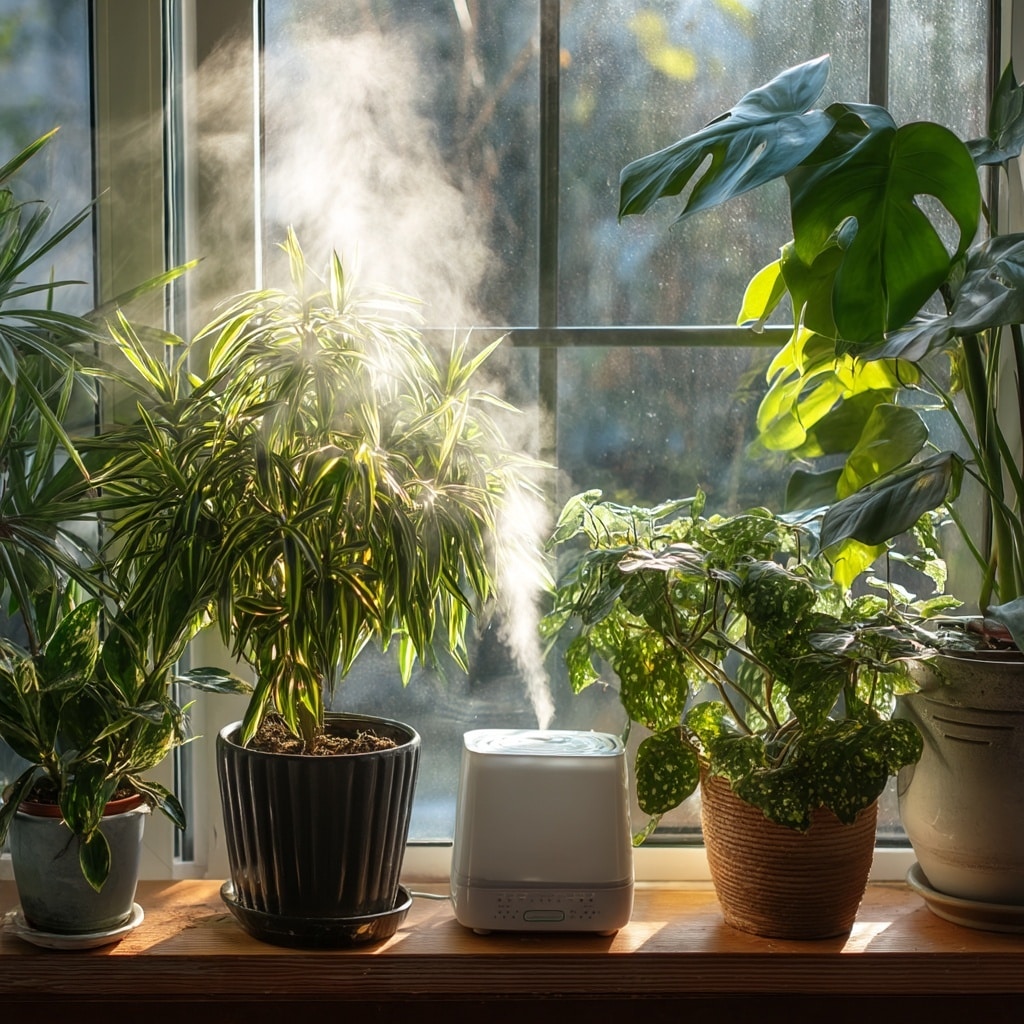
Many indoor plants, especially tropical varieties, need more humidity than the average home provides. Dry indoor air—common with air conditioning or during colder seasons—can cause leaf browning, crispy edges, or slow growth. Luckily, there are simple ways to raise humidity levels and keep your plants happy and hydrated.
Use a Humidifier or Misting Technique
A small room humidifier placed near your plants is one of the most effective solutions. It maintains a steady moisture level in the air, which helps prevent stress in humidity-loving plants like Monsteras, Calatheas, and Birds of Paradise. Just be sure not to aim it directly at the foliage to avoid water buildup that could lead to mold or rot.
If you’re looking for a budget-friendly option, misting works too. Use a clean spray bottle filled with distilled water and lightly mist your plants in the morning. This gives them a refreshing boost without overdoing it. Grouping plants together is another smart trick—they naturally create a mini microclimate and help each other retain moisture.
With just a little effort, you can recreate a more natural, plant-friendly environment right in your living room.
Keep Leaves Clean

Dust might not seem like a big deal, but for indoor plants, it can block essential sunlight from reaching their leaves. When a layer of dust builds up, it limits photosynthesis—the process plants use to make their food—leading to dull, weakened foliage over time. Regular cleaning isn’t just about looks; it’s part of keeping your plants healthy and thriving.
Dust Removal Tips
For smooth-leafed plants like Rubber Trees or Philodendrons, use a soft, damp cloth to gently wipe each leaf. Hold the underside of the leaf for support while wiping to avoid damage. Avoid using any commercial cleaners or leaf shine sprays—they can clog pores and do more harm than good.
If you have fuzzy-leafed plants like African Violets, skip the cloth and opt for a soft-bristled brush instead. Gently sweep away dust without wetting the surface, which can cause spotting or rot.
Cleaning your plant’s leaves every few weeks improves their appearance, increases light absorption, and helps prevent pests like spider mites or mealybugs from settling in unnoticed.
Fertilize Properly
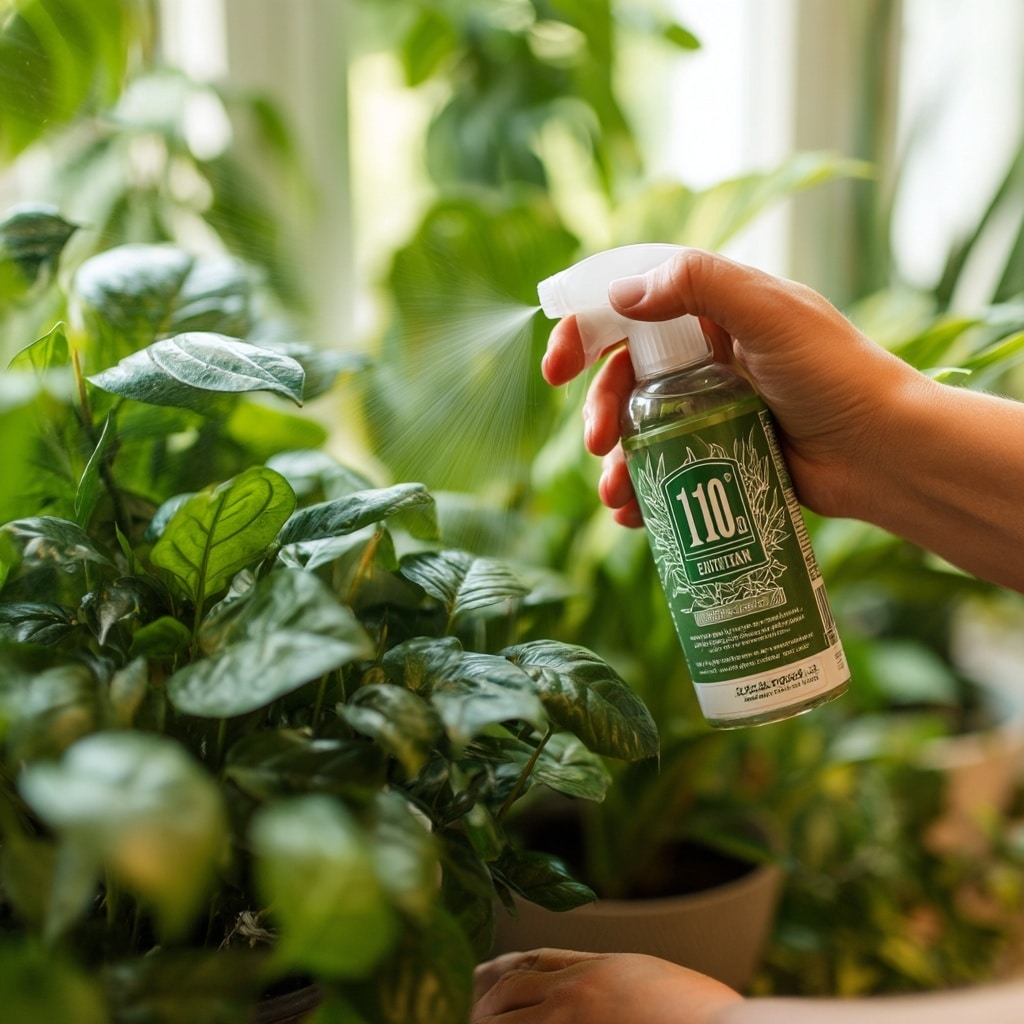
Even with the right light, water, and humidity, indoor plants won’t reach their full potential without nutrients. Fertilizing gives them the essential elements they may not get from potting soil alone. A consistent feeding routine can boost growth, strengthen roots, and help plants resist disease and pests.
Match Fertilizer to Plant Type
A balanced fertilizer labeled 10-10-10 (nitrogen, phosphorus, potassium) works well for many houseplants. But not all plants have the same needs. For example:
- Flowering plants (like Anthuriums or Orchids) benefit from higher phosphorus content to encourage more blooms.
- Foliage plants (like Ferns or Calatheas) thrive with a nitrogen-rich blend to support leafy growth.
- Cacti and succulents need a low-nitrogen, fast-draining fertilizer, or a special mix designed to prevent overwatering.
Always follow the recommended dosage on the fertilizer label. Too much can burn the roots, while too little won’t offer much benefit. During the growing season (spring and summer), most indoor plants should be fertilized every 4–6 weeks, while many take a break in fall and winter.
Fertilizing with care and precision ensures your plants grow strong and vibrant—not just survive, but truly thrive.
Prune Regularly
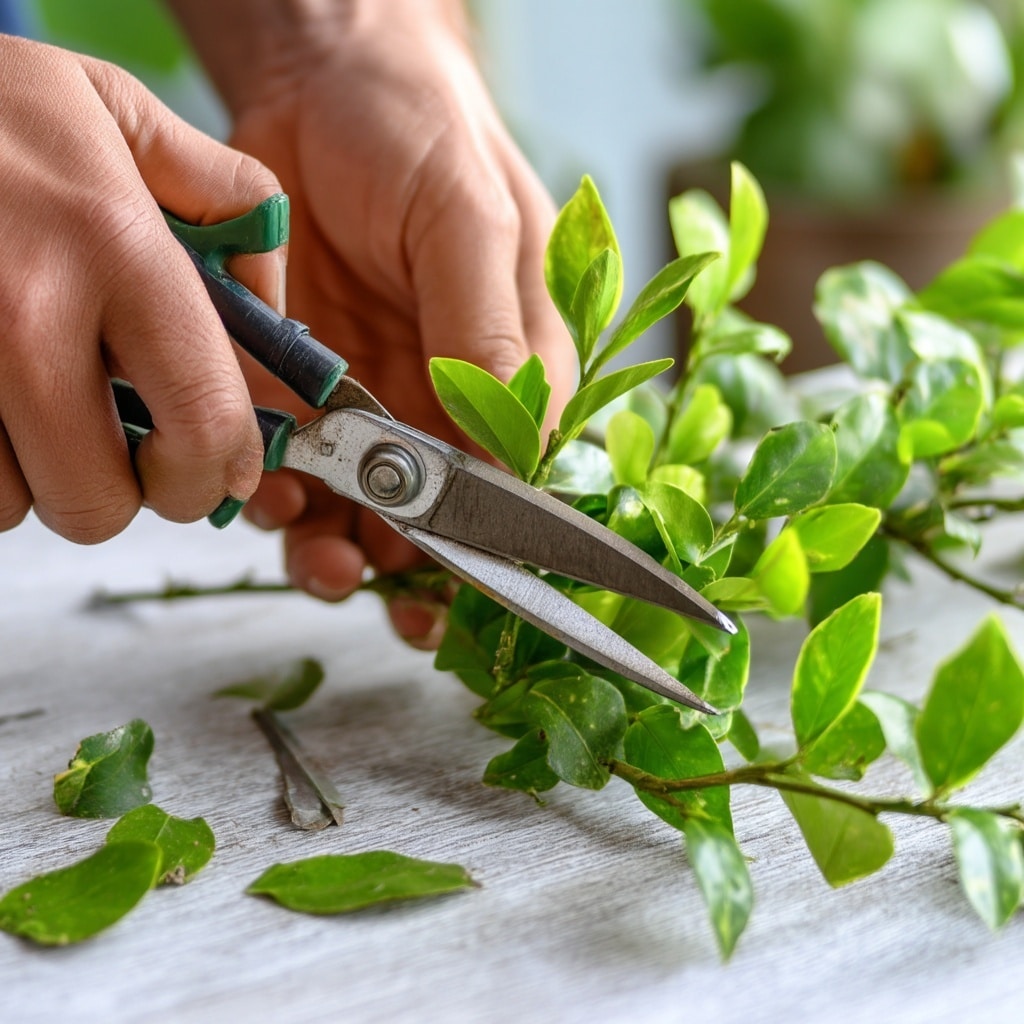
Pruning isn’t just about keeping indoor plants looking neat—it’s a key step in promoting healthy growth. By trimming back dead or overgrown parts, you’re helping your plant direct energy toward new shoots, fuller foliage, and in some cases, more blooms. It also reduces the risk of pests and disease, which tend to thrive in neglected, crowded areas.
Benefits and How-To
Start by inspecting your plants regularly for yellowing leaves, dry stems, or leggy branches. Using clean, sharp scissors or pruning shears, snip off anything that looks unhealthy or unproductive. For bushier growth, trim just above a leaf node (where a leaf joins the stem), which encourages the plant to branch out.
For flowering varieties, removing spent blooms—called deadheading—can lead to more frequent and fuller blooming. If you’re growing climbing or vining plants like Pothos or Philodendron, pruning helps manage their length and shape while encouraging fuller coverage.
Pruning doesn’t take long, but it makes a noticeable difference. A few thoughtful snips now and then help your plants stay vibrant, strong, and beautiful year-round.
Conclusion
Healthy indoor plants don’t just happen—they’re the result of consistent care, attention, and a bit of patience. By focusing on the basics—water, light, humidity, cleanliness, nutrients, and pruning—you’re setting your plants up to not only survive but truly thrive in your home. Whether you’re nurturing a leafy Monstera or a sun-loving succulent, these simple care habits will help your indoor garden grow strong and beautiful for years to come.



